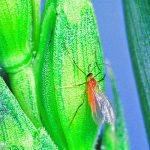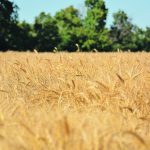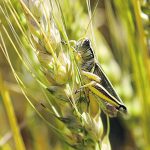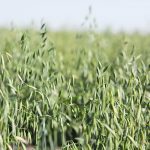Prairie Oat Growers Association president would like to see domestic use boosted and value-added processing expanded
Canada has a reputation as a reliable supplier of high quality oats to buyers in Europe, Mexico and the United States. Market opportunities in China and Asia are also expanding rapidly and a promotional campaign aimed at increasing oat sales to Japan is generating positive results. But domestic consumption could be increased.Stories by Brian Cross

Should I spray or should I go?
Deciding on a fungicide application to control mycosphaerella blight (aka ascochyta blight) in field peas can be difficult. Many variables are at play, including disease occurrence, product selection, application timing, single versus double treatments, application costs and potential returns on investment. To help, a fungicide decision worksheet is available to take some of the guesswork […] Read more

Slow down, up the volume, reduce the pressure
A spraying specialist weighs in on how producers can achieve effective deep canopy coverage while applying fungicides
In Agrimetrix research conducted in chickpeas and field peas, water volume was the most important factor associated with good canopy penetration.
Caution advised when controlling flea beetles
Canola growers must know for sure their crops won’t be used as livestock feed before using lambda-cyhalothrin this year
Effective April 29, it is illegal to apply lambda-cyhalothrin products to canola and other crops that will be used as livestock feed in Canada.
Grain exports escape strike damage
About 12,000 federal employees represented by the Public Service Alliance of Canada went on strike April 19, including port workers.

Wheat midge risk remains
Wheat midge populations are influenced by many factors, including parasitism, overwintering conditions and spring moisture conditions.

Crop protection rulings challenge producers
Canola producers will have to decide whether to play it safe and avoid using lambda cyhalothrin for any purpose this year
Within about the past two years, farmers have lost a few important tools from their crop protection toolbox.
Caution advised when choosing flea beetle treatment
That directive, resulting from a decision by Canada's Pest Management Regulatory Agency, applies to harvested seed and crop screenings, aftermath and — perhaps most importantly for canola growers — canola meal.

Recent snow not expected to hit grasshoppers
Soil likely wasn’t warm enough for the insects to be active when a widespread storm blanketed much of the Prairies
The weather conditions over the next four to six weeks will ultimately determine grasshopper populations said Prairie Pest Monitoring Network scientist and Agriculture Canada entomology expert Meghan Vankosky.
Advisory list includes nine crop chemicals
A joint initiative involving the Canola Council of Canada, Cereals Canada, Pulse Canada and the Prairie Oat Growers Association, it is intended to ensure the flow of Canada’s agricultural exports is not negatively impacted.





